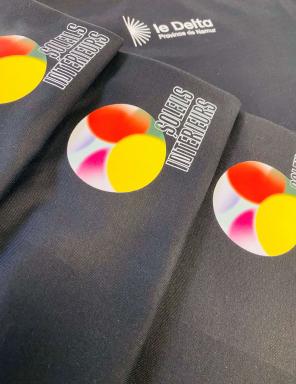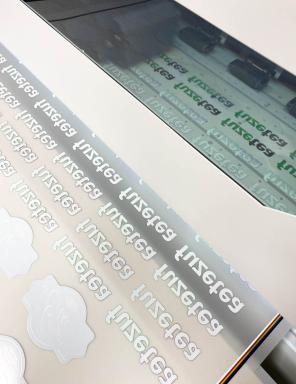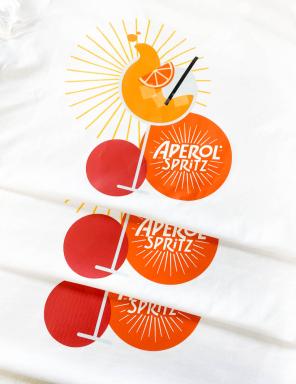Frequently asked questions
Textile customisation by DTF transfer is a 4-step process:
- Printing on the transfer film: once the motif has been printed in CMYK, a white ink is applied to the whole of the print as a backing ink, which is essential to ensure that the transfer runs smoothly (elasticity, resistance, opacity, etc.)
- Glue dusting: the PET transfer film is passed through dusting equipment where a powdered hot melt glue is applied to the surface.
- Baking: under the effect of heat, the glue gels to form a homogeneous adhesive layer ensuring protection and strong hold on the textile.
- Transfer to textile: the printed film is cut to the shape of the artwork and then transferred to the textile using a heat press.
The major difference between screen and digital transfers is in the printing of the artwork on the transfer paper.
For screen printing transfers, screen inks are printed on a translucent siliconised support by means of silk screens (maximum 8 colours in a solid).
Digital transfer involves printing water-based inks onto a transfer film using an inkjet printer. This technique allows a wide range of CMYK colours to be printed, in solid or gradient.
This customisation process makes it possible to print your logo or photo in full colour on most textile materials, guaranteeing quality and resistance, even for the smallest production quantities (minimum of 5 items).
Digital transfer uses a high-precision inkjet printer to obtain a faithful reproduction of your artwork in a 4-colour process (CMYK) without limiting the number of colours printed.



